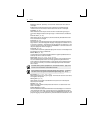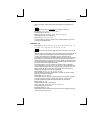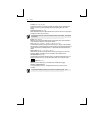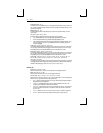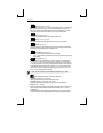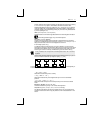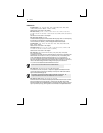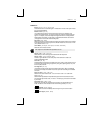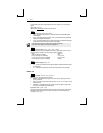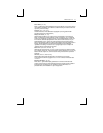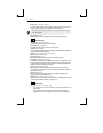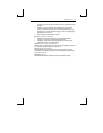
42 Setup
PORTS: F6
EIA Baud Rate: [110, 150, 300, 600, 1200, 1800, 2000, 2400, 4800, 9600,
19200, 38400, 57600, 768000, 115200, 134400]
See the Quick menu earlier in this chapter.
EIA Data Format: [7/1/N, 7/1/O, 7/1/E, 7/1/M, 7/1/S, 7/2/N, 7/2/O, 7/2/E,
7/2/M, 7/2/S, 8/1/N, 8/1/O, 8/1/E, 8/1/M, 8/1/S, 8/2/M, 8/2/N, 8/2/O, 8/2/E,
8/2/S]
See the Quick menu earlier in this chapter.
EIA (Aux) Parity Check: [On, Off]
Choose whether the parity bit will be checked. When parity check is on and the parity
bit received is inconsistent with the data received, indicating an error in
communications, an asterisk (*) 2Ah is displayed instead of the character.
Aux Baud Rate: [110, 134.5, 150, 300, 600, 1200, 1800, 2000, 2400, 4800,
9600, 19200, 38400]
See the Quick menu earlier in this chapter.
AUX Data Format: [7/1/O, 7/1/E, 7/1/M, 7/1/S, 7/2/N, 7/2/O, 7/2/E, 7/2/M,
7/2/S, 8/1/N, 8/1/O, 8/1/E, 8/1/M, 8/1/S, 8/2/N]
See the Quick menu earlier in this chapter.
EIA (Aux) Recv: [No Protocol Xon-Xoff (XPC), Xany-Xoff (XPC), DTR (DSR),
Xany-Xoff/DTR (DSR)]
Choose the form of flow control for data received from the primary or secondary host.
Software flow control uses Xon-Xoff DC1 (11h) and DC3 (13h). XPC is used by “Scan
Code” mode because it uses DC1 and DC3 as data. Xany-Xoff (XPC) is similar to
Xon-Xoff, except that any character transmitted to the host is treated as an Xon, so
data from the terminal is buffered, rather than being sent to the host. DTR (DSR for Aux)
relies on the hardware signal DTR or DSR (pin 20 or pin 6) from the device.
Xany-Xoff/DTR (DSR) uses software and hardware flow control.
Flow control is recommended to protect against data loss.
EIA (Aux) Xmit: [No Protocol, Xon-Xoff, DSR (DTR), Both]
This is similar to “EIA (Aux) Recv,” except that it applies to the data transmitted
from the terminal to the primary or secondary host or printer. DSR is the hardware
signal for Data Set Ready (pin 6).
In ADDS VP emulation and WP Graphics mode DC1 and DC3 can be
interpreted as data and should not be selected as a form of Protocol.
EIA (Aux) Xmt Pace: [Baud, 35 cps, 60 cps, 150 cps]
Define the maximum number of characters per second that the terminal can transmit.
When a characters limit (35 cps, 60 cps, or 135 cps) is set, the delays are averaged
between characters for the selected baud rate. This is also known as “pacing.” The Baud
option provides no pacing, allowing data to be transmitted at the specified baud rate.



